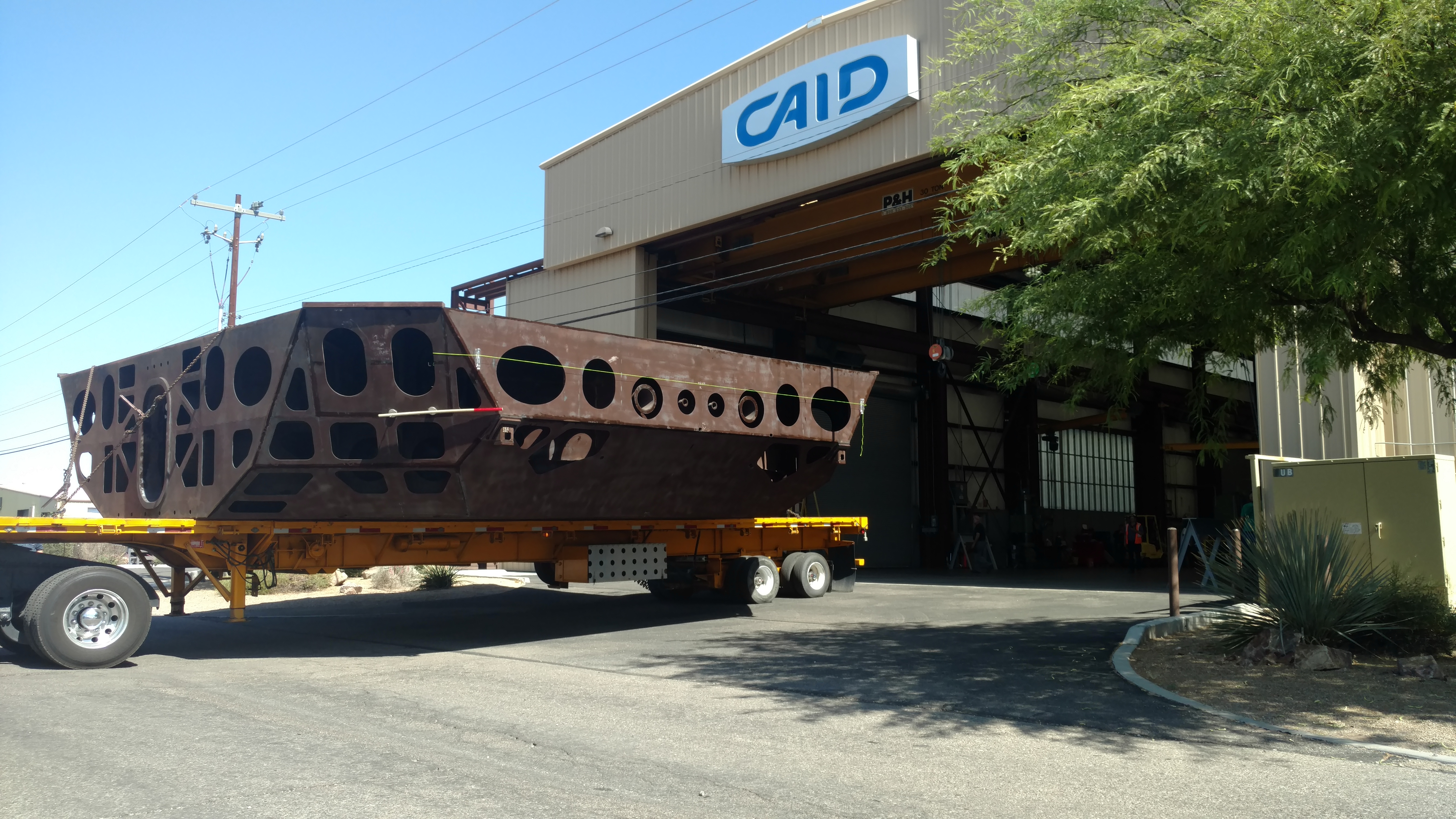
June 23, 2016 - The M1M3 cell was stress relieved inside the heavy fab building at CAID Industries in Tucson, AZ on 6/8/2016. Stress relieving relaxes residual stresses built up in the steel caused by welding and working it to provide a stable structure to prevent warpage over time. The Stress relieving process lasted about 24 hours and consumed 1200 gallons of propane with temperatures reaching up to 1050 Degrees Fahrenheit.
In order to Stress relieve the 9 m x 9 m x 2 m high cell, an oven had to be constructed around it. First, a hearth for the oven was laid out on the floor in the heavy fab building. The hearth consisted of a layer of fire brick with two layers of ceramic cloth on top of the brick. Next, a special fixture to support the cell ~0.5 m above the floor to allow ventilation was fabricated and placed on the hearth. The fixture supported the cell beneath the vacuum girder locations, which provided the stiffest support. The oven walls consisting of steel framework to support fire brick panels were then erected around the cell with a cover of similar construction on top. Two burners mounted at opposite corners of the oven powered by propane from two 1000 gallon tanks provided the heat source to raise the temperature of thecell to 1050 +/- 50 Degrees F.
The stress relieve cycle began with a controlled ramp up to 500 Degrees at a rate of 200 Deg./Hr., followed by reduced ramp up rate of 100 Deg./Hr. until 1050 Degrees was reached. Then the temperature was held for 8 hours at 1050 Degrees followed by a ramp down to 250 Degrees at a rate of 100 Deg./Hr. The burners were then turned off and the top was removed to air cool back to ambient temperature.
Thermocouples mounted uniformly around the cell monitored temperatures. During the soak at 1050 Degrees, all temperature measurements were with 20 Degrees of each other and during ramp up and down, they were within 25 Degrees, both of which were within tolerance.
The heat treating process oxidized the steel, causing the rusty look. The M1M3 cell will be media blasted and painted after final machining critical locating surfaces has been completed.
|
Figure 1. Firebrick being laid on the floor inside the heavy fab building at CAID. The firebrick is then covered with two layers of ceramic cloth (right foreground) to form the hearth of the stress relieving oven. |
Figure 2. The hearth of the oven is complete and awaits the outer walls of the oven. The cell is supported on a stand ~1 m above the floor to allow airflow around the entire cell during stress relieving. |
|
Figure 3. The oven walls being erected around the M1M3 cell. |
Figure 3. The oven walls being erected around the M1M3 cell. |
Financial support for Rubin Observatory comes from the National Science Foundation (NSF) through Cooperative Support Agreement No. 1202910, the Department of Energy (DOE) Office of Science under Contract No. DE-AC02-76SF00515, and private funding raised by the LSST Corporation. The NSF-funded Rubin Observatory Project Office for construction was established as an operating center under management of the Association of Universities for Research in Astronomy (AURA). The DOE-funded effort to build the the Rubin Observatory LSST Camera (LSSTCam) is managed by the SLAC National Accelerator Laboratory (SLAC).
The National Science Foundation (NSF) is an
independent federal agency created by Congress
in 1950 to promote the progress of science. NSF supports basic research and people to create knowledge that transforms the future.
NSF and DOE will continue to support Rubin Observatory in its Operations phase. They will also provide support for scientific research with LSST data.

Contact | Employment | LSST Corporation